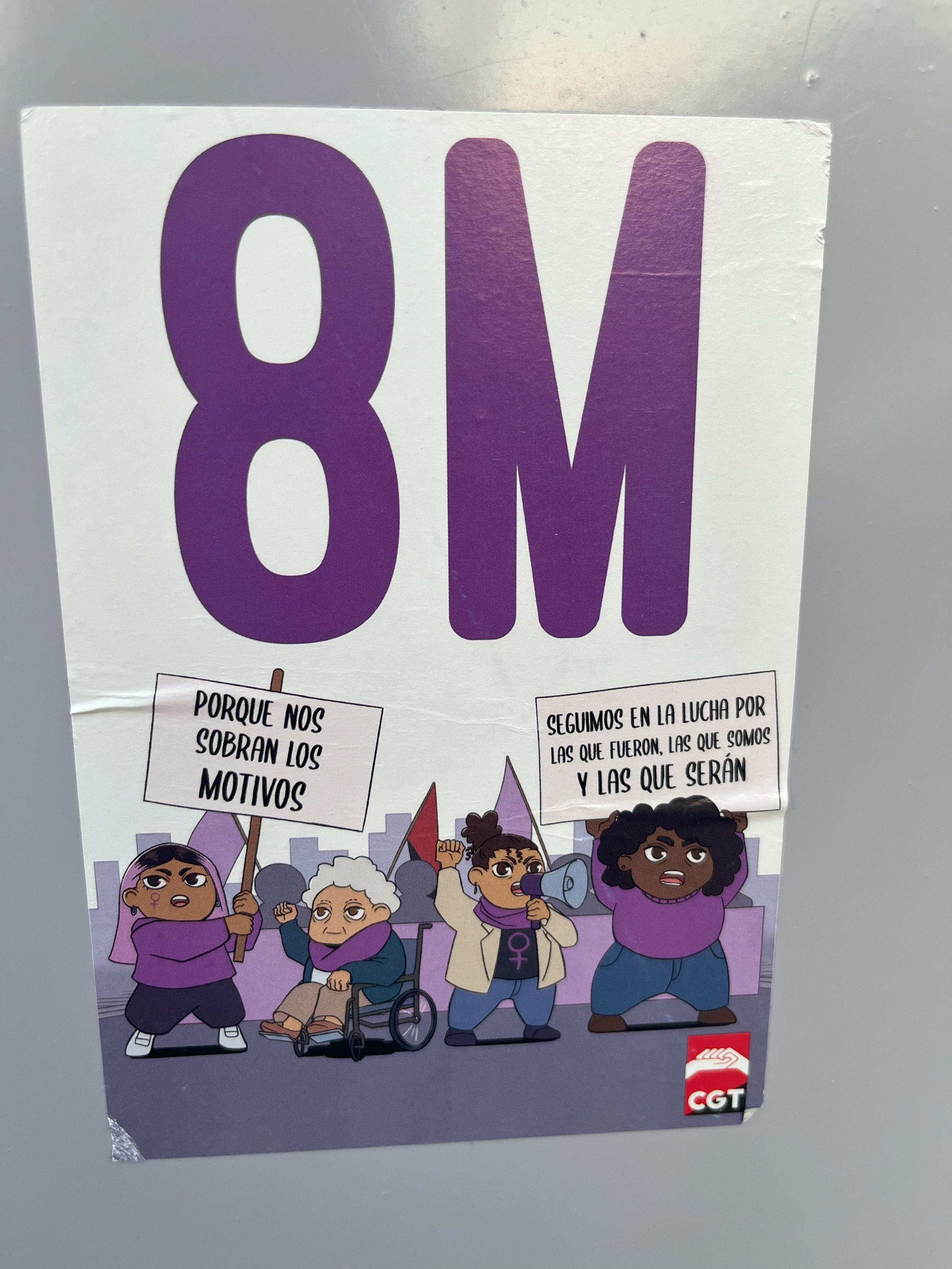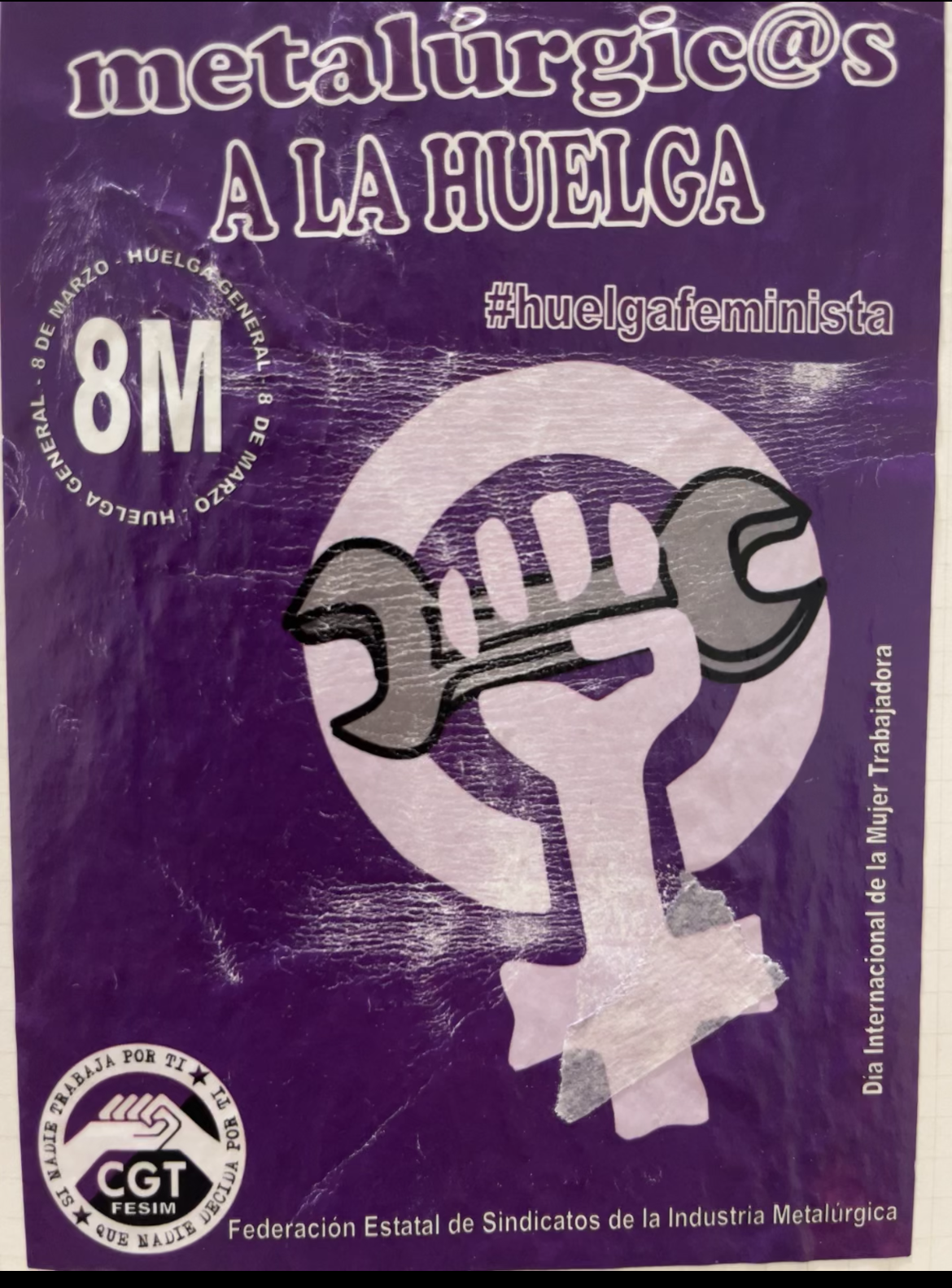8M Demonstration in Madrid: Where Women’s Struggles Meet Workers’ Struggles
The color purple took over the main streets of Madrid. Thousands of women and allies holding up signs were waiting for the demonstration to begin. I have never seen so many people gathered together – people from all ages and backgrounds prepared for this rally to begin.
Celebrating International Women’s Day
Every year on March 8, the United Nations recognizes International Women's Day to advocate for women's rights and social and economic equality. The celebration strives to end all forms of discrimination, promote women's empowerment, and fight for women's full inclusion in society.
Around the world, International Women’s Day is celebrated in numerous communities. It is the union of millions of women from all continents, regardless of their racial, linguistic, cultural, economic, and political differences. As a result, a variety of activities and protests are held to mark this holiday, honoring the accomplishments of the previous century and highlighting everything that still needs to be done.
The Madrid demonstration on March 8, 2023, was the first time since the start of the pandemic that it was held without restrictions. The main demonstration is organized by the Comisión8M. Among its chief concerns are the elimination of all forms of gender-based discrimination, the promotion of sexual freedom, and equal opportunities and rights for all.
A unique opportunity
As I was taking in what was happening around me, I came to the realization that I was in one of the biggest demonstrations in the world. I had been waiting to experience the 8M demonstration even before departing for Spain. Throughout my semester in Madrid, I had seen posters like this one filling up the streets of Madrid, alerting people that the feminist demonstration was going to occur.
I considered the privilege of witnessing a demonstration that occurs every year without a hitch. I have only known International Women’s Day from Latin America, where women would wear green, and their protests would sometimes become physical as the police would get involved. However, I felt that this demonstration would be different, and my Women’s History professor, Dr. Rosa M. Capel Martinez, encouraged us to go.
The rhythm of solidarity
Chants of “Aqui son los feministas!” (“Here are the feminists!”) filled the streets as women marched down the protest route holding up signs bearing feminist slogans. There were so many people; I was overwhelmed and amazed by the unity we were all feeling just on this one specific day dedicated to fighting for gender equality.
As my group and I headed toward the front of the demonstration, we found a group of women who were carrying the heart of the protest on their shoulders.They had gigantic drums strapped to their front sides, and they would stop every 5-10 minutes to do their drum and dance routine. As people joined in behind them, I was captivated by their dancing and clapping. The noises of people chanting, dancing, and following the beat filling the streets of Madrid were sounds of unity and solidarity.
Body Politics
The aftermath of March 8 is what intrigued me the most; stickers filled up almost every corner of the streets after the demonstration. The sticker shown below caught my eye as I had never seen something like this before. Some people may consider this sticker inappropriate as it displays the breasts of multiple women.
The letters highlighted in the word “Destestamos” spelling out “teta” (a colloquial term for breasts) might even disgust some viewers, but I interpreted it as a powerful symbol revealing the reactions that women’s bodies can spark. It even depicts one of double standards in society as women are often told to cover up.
“Detestamos el machismo” (“We hate machismo”)
Intersecting struggles against patriarchy and labor exploitation
As illustrated by the two stickers pictured below, an organization called La Confederación General del Trabajo (CGT) – The General Confederation of Labor, an important federation of labor unions in Spain - stands with the 8M movement. According to its website, CGT is known for “their association of workers defining themselves as anarcho-syndicalist, and therefore: by class, autonomy, self-management, federalism, internationalism and libertarianism.” They have been operating since 1979.
“8M Porque nos sobran los motivos” (“8M Because we have plenty of reasons”) - “Seguimos en la lucha por las que fueron, las que somos y las que serán” (“We continue fighting for those who were, those who we are, and those who will be”)
The CGT stands with the 8M movement because it sees intersections between its own labor activism and women’s struggles. This year they encouraged others to take over the streets on March 8 in order to fight the wage gap and sexist violence. Women continue to be discriminated against for being women, doubly so if they are migrants, non-white, and/or gender-nonconforming. The CGT sees these intersecting struggles as part of the work of seeking a more just, equal, and diverse world.
Importantly, March 8 is also known as the International Day of Working Women. Every year people commemorate this day and recognize all the legitimate grievances - both historical and current - against the patriarchy and the capitalist system. During the demonstration, I noted the CGT’s involvement in the streets. Its presence in the 8M movement is indicative of the deep historical role of workers, and the Socialist Party of America in particular, in founding International Women’s Day in 1909. After this, the day would soon be celebrated by women around the world - especially women workers seeking fairer wages and working conditions.
"Metalurgic@s a la huelga” (“Metallurgy workers on strike”)
The CGT used the 8M demonstration to inform people of its mission; people handed out these stickers and made their presence known using a large banner with their logo on it. They marched in support of the working class women who have been exploited by neoliberal policies such as the labor market reform, privatization, and tax cuts.
Organizations like the CGT deserve more support for their union work, especially for defending workers globally who are exploited in a capitalist society. The group has various campaigns such as the 8M for International Women's Day and others that give underrepresented groups a voice. As Paris experiences multiple violent protests against the recent pension reform raising the retirement age from 62 to 64 years old, which was passed through an executive action by French President Emanuel Macron, it is important to consider the interconnection of capitalism and patriarchy, but also the different grassroots movements around the world fighting against these oppressive forces.








